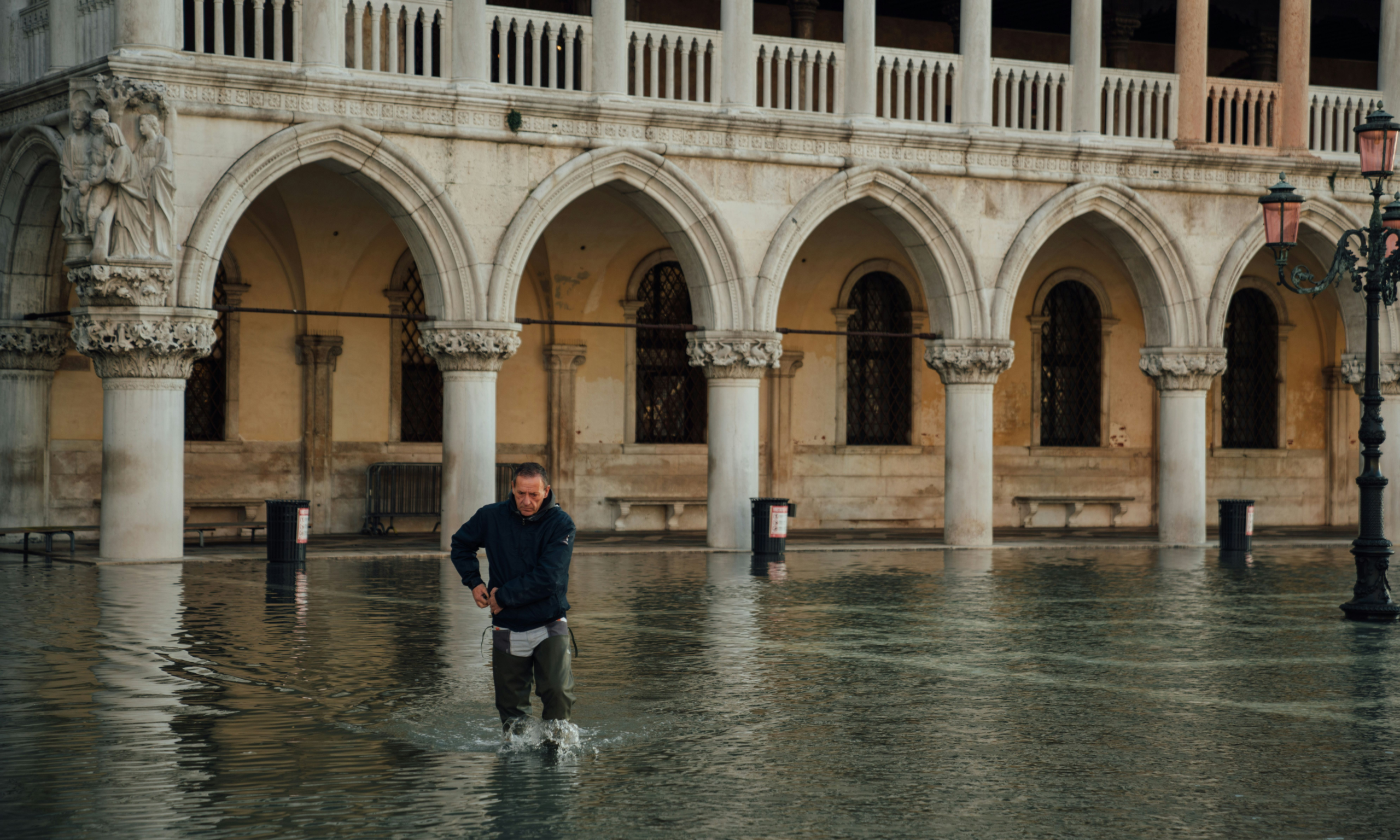Venice's famous Piazza di San Marco is frequently flooded © Image: Egor Gordeev
Enjoy the Biennale, everyone, but be aware that it is taking place in a dying city—your grandchildren may only get to see Venice as a crumbling ruin.
This is completely unnecessary. If Venice, like Amsterdam, were in the Netherlands, it would be protected well beyond 2100 by the highly sophisticated Delta Programme, the command centre of the national plan that defends the country from the rising sea. The programme has abundant, long-term funding from all Dutch governments, to which it responds and which back it to the hilt. It bases its water-protection policies on four possible scenarios in 2100, ranging from a minimum rise in the relative sea level of 44cm by the end of the century to a maximum of 130cm. This approach is so generally accepted in the Netherlands that no significant private or public investments are made without being modelled against these scenarios for their environmental, economic, social and political implications—and feasibility.
Why is this relevant to Venice? Scientists are now sure that the sea level in the Mediterranean will rise at almost the same rate as in the Atlantic, so it is a mystery why Italy, which has a heavily built-up coastline of 7,600km, has no national plan for protecting its seaboard from the rising sea level. Unless it gets moving very soon, Venice will be the most famous victim of the rising seas and the world will be watching. As Lord Byron wrote 200 years ago: “Oh Venice! Venice! when thy marble walls are level with the waters, there shall be a cry of nations o’er thy sunken halls…”
Paradoxically, the mobile barriers known as Mose, which reduce flood risk in Venice, are one of the reasons why there is so little planning. Very few people understand the difference between the temporary acque alte and the chronically rising level of the water in relationship to the buildings, and therefore think the problem has been solved. Furthermore, the Italians have been disgusted at the corruption and delays involved in the building of Mose and do not want to think that they are not the final solution.
Yet the Serenissima is like a very sick person. The flooding events are the acute crises, but it is the chronic illness, the rising water level, that is killing her. Take the lowest and most optimistic of the Delta Programme’s 2100 scenarios, a rise of 44cm (about 17 inches); add to that another 8cm to 12cm because Venice is sinking slowly—by between 1mm and 1.5mm a year—and we can foretell that the water level will be at least 52cm higher 80 years from now.
It may only be a matter of a few handspans but the mean water level has risen by about 32cm since scientific measuring began in 1897 and it is already doing damage. For centuries, the water was below the level of the stone bases of the buildings, which are almost impermeable. Now, look at the slime line and you will see how high it reaches twice a day, at every high tide. That means it is often in contact with the highly permeable brickwork above those bases, and that repeated soaking is causing the city to crumble.
The decay is everywhere. It will not be a romantic slipping away—Byron’s “marble walls level with the waters”—but a squalid decline, with building after building collapsing well before the end of the century.
What can be done? “Go to government with solutions, not problems,” says Mike Davis of the US Army Corps of Engineers, who more than anyone else has been responsible for saving the Florida Everglades in an equally complicated political context.
A tiny coalition of highly influential people and institutions, Italian and non-Italian, needs to be formed. They will finance the drawing up of a preliminary draft of what the solution might look like, using Italy’s excellent hydrologists, engineers and environmentalists, who are already well aware of the problem and are deeply frustrated at not being used properly. Then take this blueprint to government and give it the courage to set up an international partnership with the EU and others to plan, finance and execute the salvation of the world’s most beautiful city. Such a partnership, operating transparently, would reassure those who believe that Italy is incapable of carrying out a major infrastructure project without bloating it with corruption.
When in Venice this year, we should ask ourselves what artists, curators, collectors, media and the elite of the art world can do to help make this crucial plan happen.
• Anna Somers Cocks is the founding editor of The Art Newspaper, is a fellow of the Istituto Veneto di Scienze, Lettere ed Arti, and was chair of the Venice in Peril Fund

